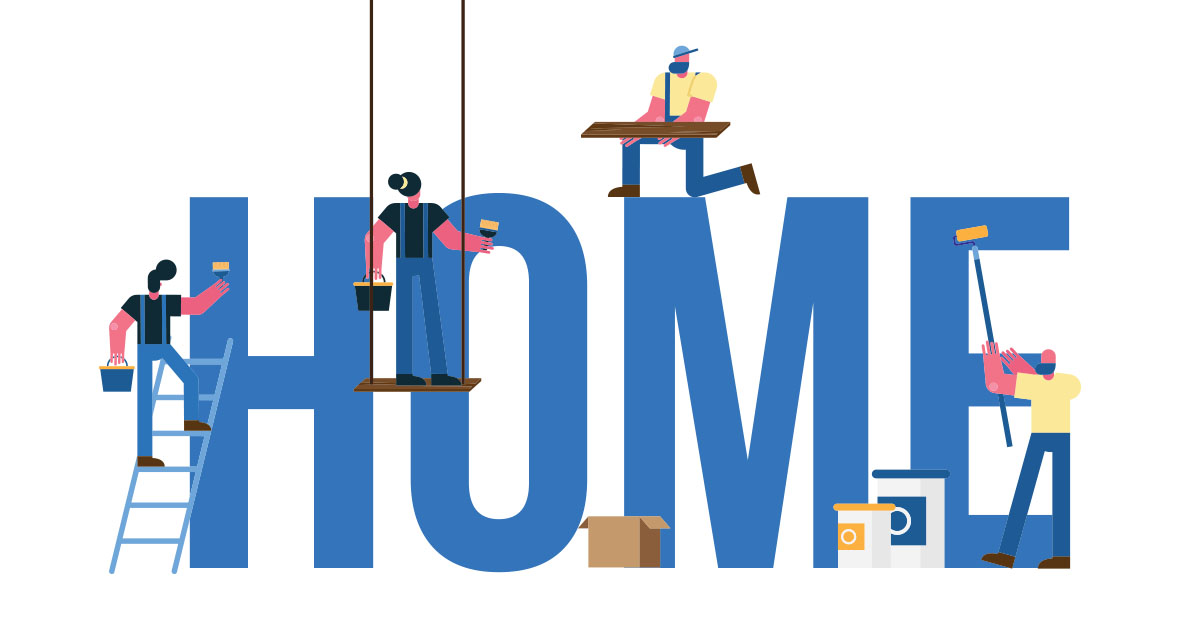American homes have never been this old, or at least not since the U.S. Census Bureau began tracking the data. The median age of the nation’s owner-occupied homes surpassed 40 years for the first time, according to 2021 American Community Survey data released earlier this year.
In 2006, the median age of a home was 31 years, according to numbers compiled by the National Association of Home Builders (NAHB). The age of existing homes shot up rapidly after the Great Recession.
“Contractors have a tendency of flip-flopping between remodeling and new construction based on what earns them the most money.”
– Todd Tomalak, principal of building products, Zonda
“The housing stock is getting older and the reason is not mysterious,” says Paul Emrath, NAHB’s vice president for survey and housing policy. “We’ve just been building new housing at below-normal rates pretty consistently since about 2008.”
From the 1960s through the 1990s, builders produced about 1.5 million housing units per year. Since the Great Recession, however, they’ve produced far fewer, Emrath says. While home construction activity has risen in recent years, it’s only resulting in about 1.4 million new homes annually, about 100,000 shy of the historic norm. Homebuilders should be churning out even more homes to overcome the existing shortfall and account for population growth, Emrath says.
With fewer new homes coming onto the market, that’s pushed the typical age of an existing home dramatically higher. So, it’s no surprise that the U.S. is in the midst of a remodeling boom. Zonda’s Todd Tomalak says that the years between 2020 and 2030 may well be remembered as “the golden age of remodeling.”
“It’s a number of things that are all coming together at the same time in a way we haven’t seen in the data before,” says Tomalak, the company’s principal of building products.
In addition to aging homes, he also cited other reasons for the remodeling boom. For one, homeowners are sitting on record levels of equity. There’s also the lock-in effect, making owners with low interest rates unwilling to move. Some people purchased rashly during the COVID-19 pandemic and are stuck in homes they dislike. And in the past decade, major remodeling projects per household — as opposed to total dollar volume — were below the levels of previous decades.
Last year, mortgage lenders authorized $275 billion in home equity lines of credit (HELOCs) to U.S. homeowners. That’s the highest total since 2007, says CoreLogic chief economist Selma Hepp. The total amount authorized this year is estimated to decline to $178 billion as higher interest rates deter potential borrowers. Still, homeowners are expected to spend $486 billion on home renovations and repairs this year, the largest amount on record.
“Over the last few years, we’ve seen huge amounts of money spent on improvements and repairs,” Hepp says. “We do believe that number is sort of peaking and will decline slightly from that peak over the next year. Even with that decline, we’re looking at some of the highest levels that we’ve seen since the 1990s.”
Emrath agrees that the number of remodeling projects should decline soon. “It’s been so strong, that was a trend that couldn’t keep going forever,” he says.
Tomalak also believes there will be a lull, noting that homeowners have burned through money saved during the pandemic, credit card balances are rising and higher interest rates are cooling demand for HELOCs. But he thinks that remodeling will pick up after a brief pause and remain elevated through the rest of this decade.
If a homeowner dislikes their property, they can either move or remodel. In the 1990s, homeowners were 4.3 times more likely to move than to remodel, according to census data. By 2021, however, the average homeowner was 1.3 times more likely to move than remodel — a nearly equal likelihood to stay put rather than sell.
Tomalak likens it to holding a beach ball underwater. Without new homes to move into, owners will continue renovating. So, when will it pick up after the lull? “You tell me when rates begin to come back down,” Tomalak says. “If we kind of take what’s in front of us at face value, we would say that we’d begin to see strong growth again in Q4 2024.”
With so much money, labor and materials being spent on home renovations, is this taking away from new construction activity? Tomalak, Emrath and Hepp all say yes to some degree. Hepp cautions that remodeling and new construction activities vary by location.
“New construction is very much concentrated in certain parts of the country such as the Southeast, whereas a lot of renovations and repairs are happening in the parts of the country that are less affordable, where people are sort of sitting in their homes,” she says
Labor is one the biggest issues facing the home construction industry. Tomalak says there are only so many skilled contractors to hire. “Contractors have a tendency of flip-flopping between remodeling and new construction based on what earns them the most money,” he says.
There are lot more remodeling projects than new homes being built, Emrath says. “The typical remodeling project does not use as much labor and materials as new construction,” he notes. “But there are some 10 to 11 million remodeling projects a year compared to 1.5 million new homes being built. Even though there’s fewer laborers, there are more projects.” ●






